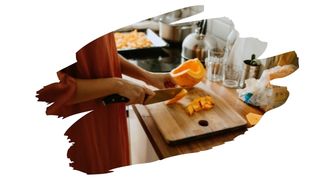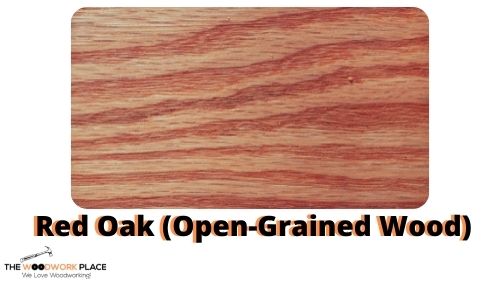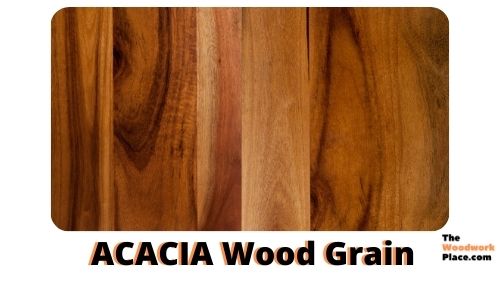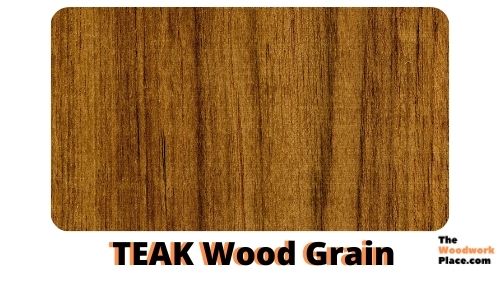The secrets out… Acacia wood cutting boards are in!
Between it’s natural moisture-resistance, (and increasing affordability), Acacia is growing in popularity as a contender to traditional Maple wood cutting boards.
And it’s resistance to moisture, rot and decay, makes Acacia stand-out amongst hardwoods. Especially as this timbers natural oils help it endure regular washing.
But, Acacia is far from the only naturally moisture-resistant cutting board timber on the market.
Teak wood is a high-priced timber that is famed for its durability and rot-resistance. In fact, unfinished Teak wood can last outside for decades. And this unique lumber does not require frequent reapplications of a wood preserving oil finish.
So, here we have two very different—yet very durable—types of wood. But, what is it that really sets them apart?
Well, in this post, you will learn exactly why Acacia wood is such a special type of hardwood. You will also find out why Teak wood cutting boards can be some of the most durable chopping blocks around…

This post may contain affiliate links to products that we receive a commission for (at no additional cost to you). Learn more here.
What Types Of Wood Are Great For Cutting Boards?
The best types of cutting board materials are ones that are hard enough to be scratch-resistant.
Every time you chop during food prep, the last thing you need is to end up chopping through the board itself. So, cutting board wood needs to be hard enough to shrug off sharp impacting metal edges.
Now, a quick way to check how hard wood is, is to find out where that piece of wood lies on the Janka Hardness Scale.
All lumber is given a Janka rating based upon this scale. And the scale simply measures the results of a simple impact test.
The Janka rating tests how many pounds of force (lbf) it takes for a small metal ball to dent a piece of wood. The greater the force, the higher the Janka rating.
For example, Acacia Blackwood (also known as Australian Blackwood), has a Janka rating of 1160. Which means that it will take 1160 pounds of force for metal to dent this hardwood.
Related Post: Acacia Vs Maple Cutting Boards (4 Key Pros And Cons)
Why Janka Ratings Matter For Cutting Boards
Cutting board wood needs to be hard enough to handle chopping utensils. And, at the same time, that wood can’t be so dense that it ends up blunting those self-same kitchen utensils.
Which is why cutting board wood should optimally fall under a Janka hardness rating range of between 900 and 1500 lbf.
What Types Of Wood Are Not Good For A Cutting Board?
Janka rating aside, there is more to quality cutting board material than just it’s density. The surface of that material also matters a lot, especially when it comes to food hygiene.
Wood is a porous material, one that is naturally good at efficiently soaking up moisture and water. It does this so well, that wood is classed as a hygroscopic material.
What Does ‘Hygroscopic’ Material Mean? Hygroscopic materials refers to materials that absorb and hold in moisture, fluids, and liquids from the environment surrounding them.
Now, wood is so hygroscopic that it will absorb food liquids into its pores. This prevents bacteria from getting a chance to propagate in that fluid.
This reduces the chances of cross-contamination between raw and cooked food. But, while wood is antibacterial, not all wood grains types are suited for food prep.
Open grain wood, (these are wood types that have pores so large that they’re clearly visible), pose a food-safety risk.

As you prepare food on these open-grained surfaces, little bits of food can get caught in those large pores. And this, in turn, can make these types of wooden surfaces hard to clean.
So, avoid making your cutting board out of open-grained wood such as Oak wood.
What Is So Special About Acacia Wood Cutting Boards?
Acacia is a special type of hardwood, due to the fact that it is an oily wood. And what this means is that this subtropical wood comes with its natures-own wood preserving oil.

Acacia wood oils act like a penetrating oil finish, protecting it from moisture, rot, and decay. However, even with its own natural oils, Acacia will still need an oil finish to fully protect it.
Is Teak Wood Just As Rot Resistant As Acacia?
Teak wood is more moisture-resistant and rot-resistant than Acacia. And that is simply because Teak wood is much oilier than Acacia by far.
It’s so saturated with its own natural oil, that it can be difficult to get this hardwood lumber to soak up a penetrating oil finish.
Now, Acacia will always need an application of some kind of wood preserving oil finish. While, Teak wood does not.
In fact, Teak wood can last for decades without any penetrating oil wood finishes, (such as Mineral oil or Tung oil), applied to it.
Related Post: Can You Apply Lemon Oil On A Teak Wood Surface?
What’s The Main Difference Between Acacia And Teak?
Other than their oiliness, (with Teak wood being the much oilier of the two), their main difference lies in their density.
Teak wood has a Janka hardness rating of 1070 lbf, which places it safely within that optimal cutting board density range.
Acacia wood, on the other hand, is a bit of a mixed bag. Unlike Teak wood, Acacia wood subspecies can have wildly different Janka ratings.
Gidgee (Acacia cambagei) has a whopping Janka rating of 4270. Whilst all the way on the other end of the Janka scale sits Silver Wattle (Acacia dealbata) with its meager 40.9 Janka rating.
So, Is Acacia Wood Good For A Cutting Board?
Yes, provided that the cutting board is made from a medium density Acacia wood subspecies, such as Australian Blackwood (1160 lbf). Plus, this lumber also has the wavy straight grain we’re looking for in a cutting board surface.
But, buyer beware! Not all Acacia wood pieces list the precise subspecies of Acacia they were made from.
So, it can be difficult to be sure what you’re getting in terms of wood density, (especially in regards to a store-bought Acacia chopping block).
Can You Use Teak For A Cutting Board Too?
Absolutely you can. Teak wood is just about hard enough (1070 lbf) to be used as a chopping block.

This wood is also much more durable than Acacia wood. And it doesn’t require as much mineral oil (as Acacia) to keep it in tip top condition.
Related Post: Walnut Oil Vs Mineral Oil: Which One’s Better For Your Cutting Board?
What’s more, Teak woods straight grain won’t leave room for morsels of food to get caught in.
To Sum Up, Here Are The 3 Key Takeaways…
1). Acacia is an oily wood that is fairly rot resistant. But, it will still need a wood finish to protect it.
2). Teak wood is a very oily wood that is incredibly rot resistant and durable. It is so oily, oil finishes struggle to saturate its grain.
3). Both Acacia and Teak wood are optimal choices for cutting board material. Although, Teak wood is the more durable wood out of the two.


